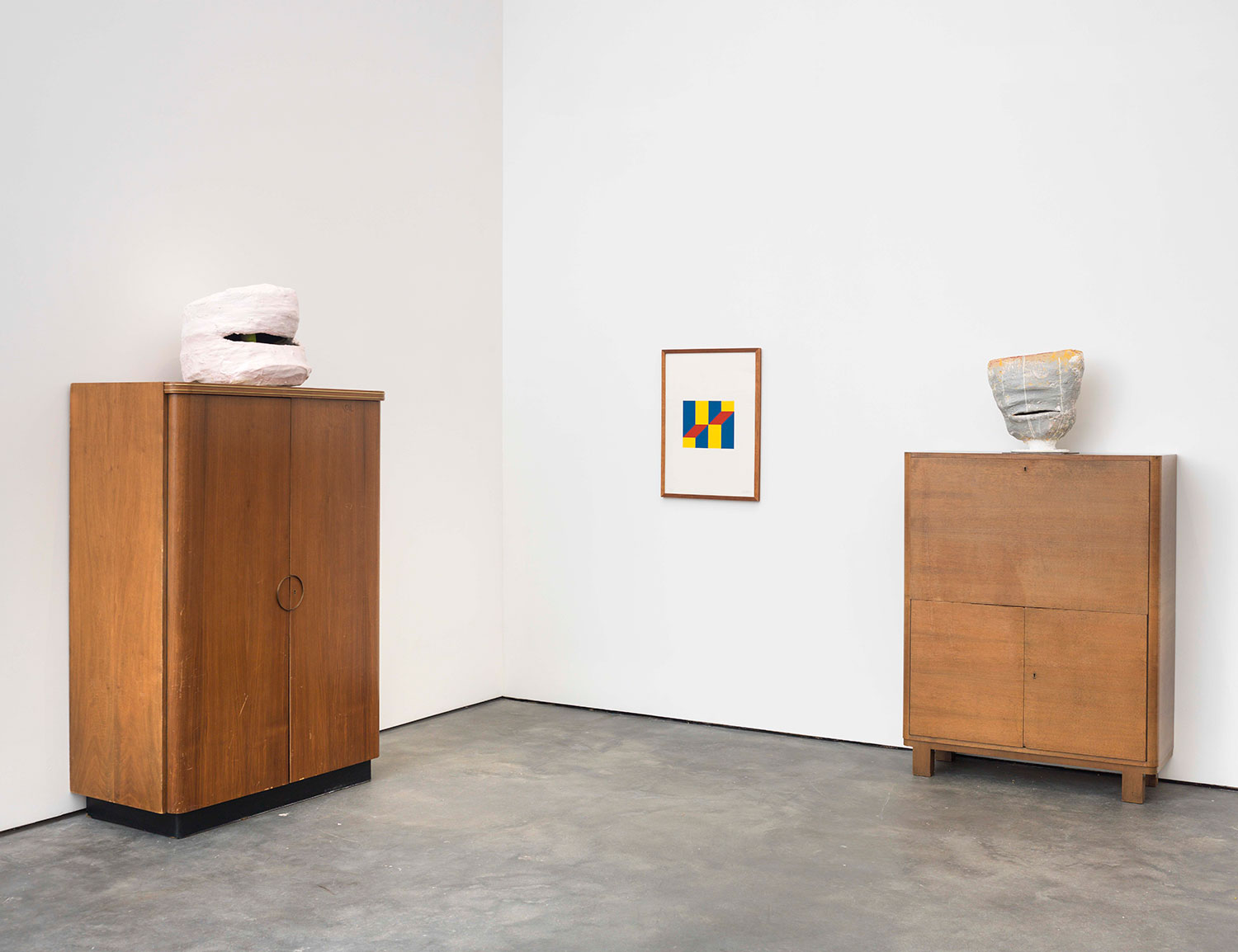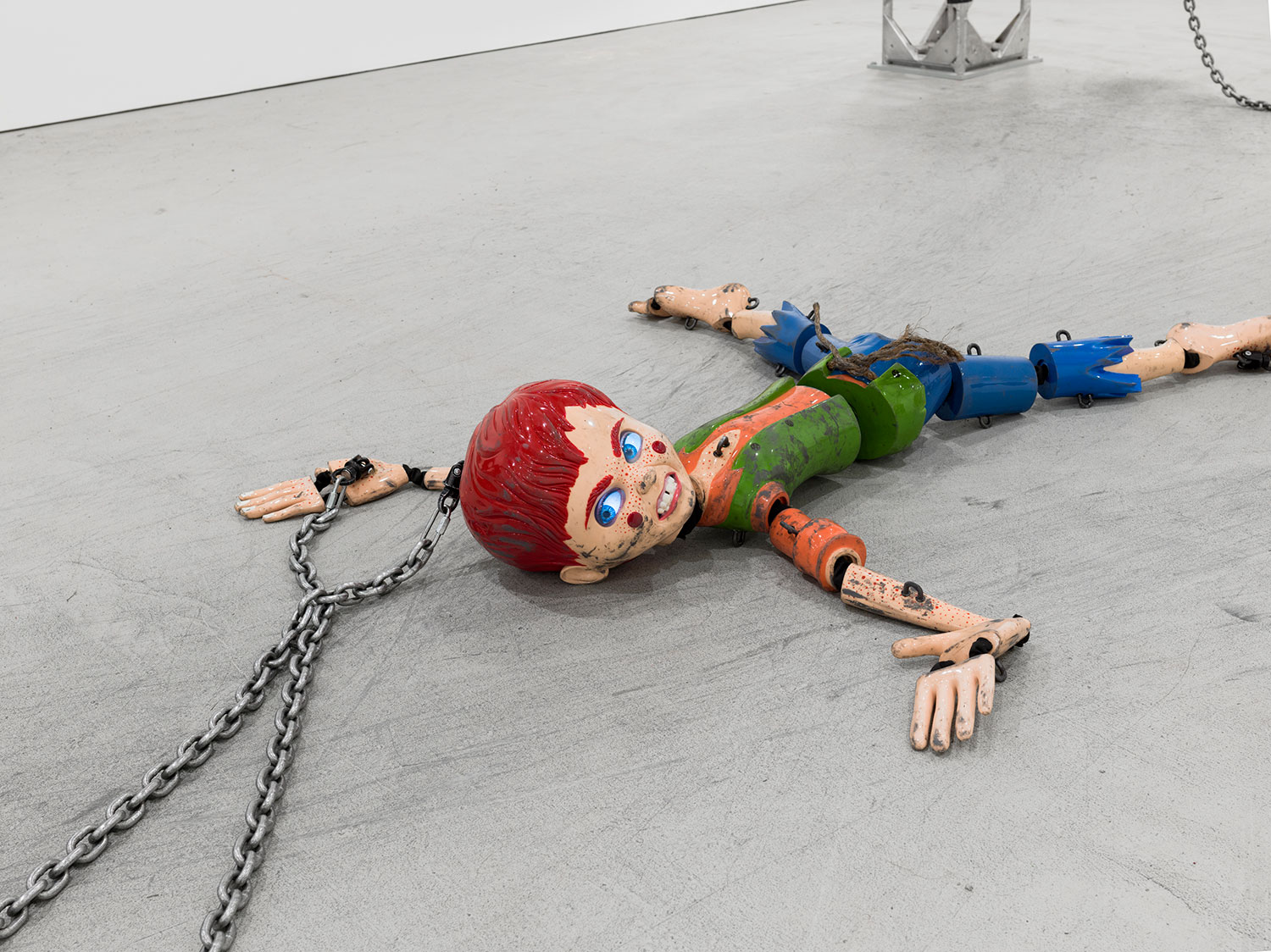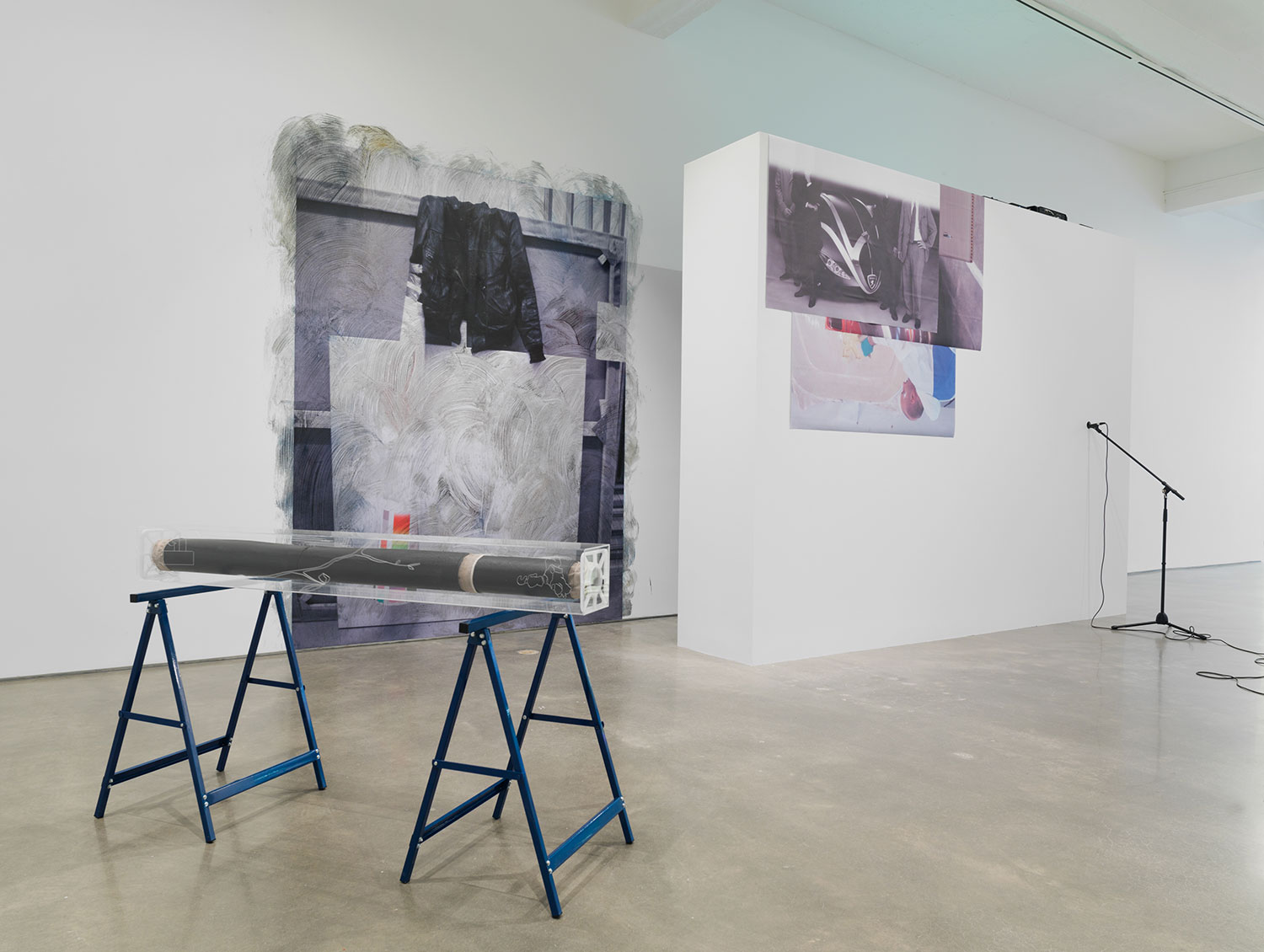Nicola Trezzi: “Your History is Not Our History” is the title of the show. Whom are you addressing in this statement, the institution or the general contemporary art audience?
David Salle: I don’t make much distinction between them.
Richard Phillips: We are addressing the contemporary art audience, which includes those individuals who make up the institutions responsible for creating and enforcing the fictional narratives claimed as history.
NT: How long have you known each other for and how did you meet? Is this show the result of discussions you have had over the years?
DS: We met at the beginning of this project.
RP: Emilio Steinberger, the director of Haunch of Venison in New York, originally contacted David about working on an exhibition focused on work of the ’80s. Following a conversation about the show with Emilio, he asked me whether I would consider joining David in organizing it. Shortly hereafter David and I met for lunch and immediately found common ground from which to proceed. What followed was an intensive conversation about art of the 80’s and how it functions in relation to today’s context as well as its relationship to the preceding decades.
NT: Artists like Peter Halley, Robert Longo and Ashley Bickerton could be considered a part of “your history.” Why are they missing?
DS: We are not trying to represent everything that happened in a given time period; we wanted to work with things we really believed in and which have a strong pictorial orientation. Everything in our show has a kind of inner energy, which we wanted to link together. It is not democratic in the least.
RP: Robert Longo’s work does appear within our show through the critical aperture of the Louise Lawler piece Arranged by David Marron, Susan Brundage, Cheryl Bishop at Paine Webber. Otherwise our show was meant to draw connections and set up specific relationships between works by artists who created paradigmatic shifts in both David’s and my consciousness at that time and who’s works have had a sustained nfluence up until the present.
NT: The subtitle of the show is “New York in the 1980s.” What issues from the 80s are still relevant for artists today? What might the era’s heritage be?
DS: Independence, freedom from received wisdom.
RP: The reference to “New York in the 1980s” was meant to establish a framework from which to begin to explore the relationships between these specific artists, their work, and the common circumstances they were facing while producing their art. The selection of these works were meant to highlight the fact that these paintings, photographs, and sculptures are undiminished in their communicative strength and remain in vital dialogue with the art being made today. In some ways the audacity of this work and its challenge to conventions and authority stands in stark contrast to the art that is being produced today that has but one purpose – to assimilate with and explicate institutional doctrine. I would say that all the issues that the works within this show bring forward remain on the table. Lodged within the fabrication of the linear time frame of history is the myth that the presence of objects as referent can permanently extinguish ignition points of artistic debate. No issue is stable or settled. To me re experiencing these works anew makes it clear that the statements made by these artists are as powerful as they were when I first saw them in the galleries.
NT: Painting is strongly represented in the show. At the epicenter of this presence is Clemente’s Untitled (Henry Geldzahler) (1983), which is far removed from the decorative aesthetic that is typically associated with his work. As painters yourselves, could you please articulate on painting’s dominance in the show and the inclusion of this specific painting by Clemente?
DS: That’s a great painting, and one which shows Francesco at his most fearlessly inventive. That painting dramatizes the notion that sometimes you have to be prepared to do anything in a painting.
RP: The dominance of painting in the show reflects David’s and my shared interest in how artists at this time chose the form of painting as the carrier of meaning through visual and visceral experience. During a conversation I had with Francesco Clemente at the opening, he related that after a decade of process, installation, performance, and other anti-aesthetic approaches he deliberately chose the conventional form of painting because it was the least likely vehicle that his conceptual work could appear in. Untitled (Henry Geldzahler) (1983), is a strong example of the seemingly irrational and destabilized way in which painting can assert agency and autonomy in both method and depiction. His unhinged portrait of the high influential art curator, who broke many barriers by establishing close personal relationships with artists and set several precedents as an openly gay man working for a conservative institution like the Metropolitan Museum of Art in New York while actively supporting AIDS causes, is perhaps the strongest example of the willingness to accept the conventions of portraiture and painting in principal only. The “by any means necessary” articulation of the portrait weds the spirit of the unpredictable elastic nature of the form with the dynamic and truly avantguard nature of the subject.
NT: People said that “The Picture Generation” exhibition at the Met revealed a David Salle we forgot about: a conceptual artist, who suddenly became a painter. On the other hand, “NewMuseum,” Richard Phillips’s show at Gagosian, was a “pornographic” gesture toward the institution. How do you feel about the role of the artist within curatorial practice? In other words, what do you think of curators?
DS: I don’t want to generalize about curators — or anything else, which is one of the things we are emphasizing with our show — that art resists generalization.
RP: I feel that it is important for artists to seize opportunities to tell their version of events at any given time and without warning. Artists shall not be subordinate or secondary to curatorial practice. As exhibition constructors and general contractors of cultural spectacle contemporary art curators are just as susceptible to the self aggrandizing and ego driven myth building as any of the artists in our exhibition were accused of in the 80’s. Artist / curator relationships necessarily shift back and forth in a near sexual way of those who are being topped and those who are bottomed.
NT: Did you put “organized by” to distance your act from the curatorial point of view?
DS: That was Richard’s idea — but I am not so uncomfortable with that word. It is true that the word is devalued today — everyone is a “curator.” Whatever it’s called — it should be interesting.
RP: We chose to use the term “organized” rather that curated because what we were interested in claiming to join the curator class of individuals serving as arbiters of faith based ritual. Our show was an artist organized show where more that 60% of the works on view were lent by the artists themselves. The perspective of this exhibition was to present the works with deference to the way in which artists think about their works and not curators.
NT: In the exhibition’s press release you acknowledge the fact that none of the artists in the show are represented by Haunch of Venison. Do you think commercial galleries can play the role of the institution without all the constraints and limits of the museum? Or rather, is the museum acting too much like the gallery, letting us therefore treat the gallery as a museum?
DS: I don’t much care about that stuff — I want to see good shows wherever they take place. If someone has an idea they should do it.
RP: My exhibition title “NEW MUSEUM” addressed this condition directly. The previously hidden public / private relationships between patrons, museums, auction houses, not for profits, and galleries are now more openly being exposed as completely integrated and inseparable. Trustees demand obedience from directors who pass on demands to curators who are exposed to artists through galleries who promote the works to trustees who bring works to auctions, which are valued by appearances in museums and fundraisers. In all of this it is up to the artist to understand these relationships and the circumstances that lead to their own instrumentalization. Like choosing painting as a form within which one’s conceptual practice may appear, both the galleries and museums must be openly evaluated for their potential to have unexpected contextual consequences. The certainty of role play for institution, gallery, and artist alike is officially over.
NT: Will you do this again? Step aside and curate shows?
DS: If asked I would happily do it again.
RP: I already have. My exhibition “Adolf Dietrich / Richard Phillips Painting and Misappropriation” is now on view at the Swiss Institute in New York. The exhibition is co-curated by myself and Gianni Jetzer the director of the Swiss Institute.




